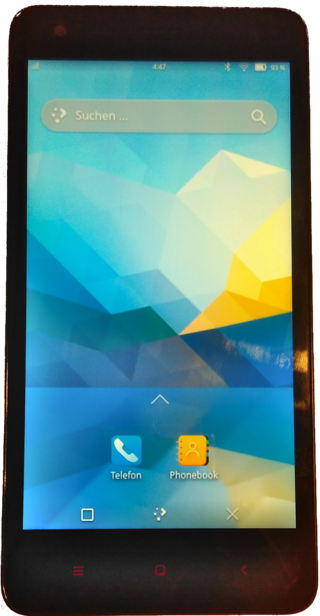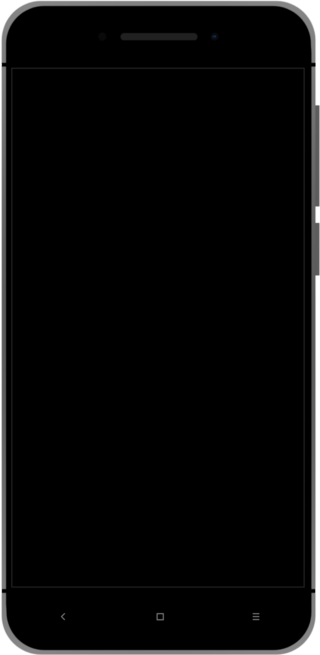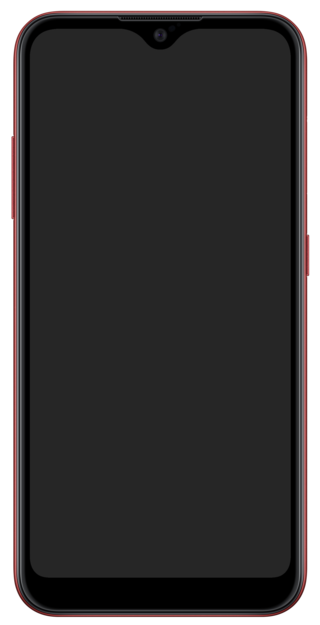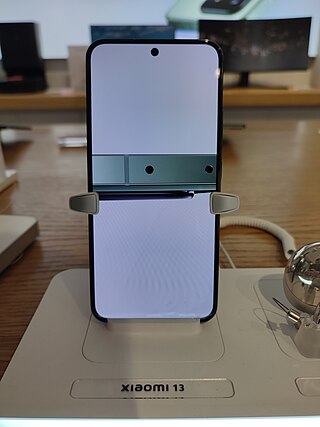Related Research Articles

The Samsung Galaxy S series is a line of Android-based smartphones and tablet computers produced by Samsung Electronics. In conjunction with the foldable Galaxy Z series, the series serves as Samsung's flagship smartphone lineup, and is the high-end line of the wider Samsung Galaxy family of Android devices.
Google Pixel is a brand of portable consumer electronic devices developed by Google that run either ChromeOS or the Pixel version of the Android operating system. The main line of Pixel products consists of Android-powered smartphones, which have been produced since October 2016 as the replacement of the older Nexus, and of which the Pixel 9, Pixel 9 Pro and Pixel 9 Pro XL are the current models. The Pixel brand also includes laptop and tablet computers, as well as several accessories, and was originally introduced in February 2013 with the Chromebook Pixel.

Redmi is a subsidiary brand owned by the Chinese electronics company Xiaomi. It was first launched in July 2013 as a budget smartphone line, and became a separate sub-brand of Xiaomi in 2019, to takeover entry-level and mid-range devices originally produced by Xiaomi brand, while Xiaomi itself produces upper-range and flagship Xiaomi phones.

Xiaomi Redmi 2 is a smartphone produced by Xiaomi released in January 2015. It is the successor to the Xiaomi Redmi 1 family.

The Xiaomi Redmi Note 3 is a smartphone developed by Xiaomi Inc. as part of Xiaomi's low-end Redmi smartphone line. It has three variants:

The Xiaomi Redmi Note 4 is the fourth smartphone under the Redmi Note series developed by Xiaomi Inc. It is a part of Xiaomi's budget Redmi smartphone lineup. It has two variants : The older version sold as Redmi Note 4 is powered by a Deca-core Mediatek MT6797 Helio X20 SOC. The upgraded version, sold both as Redmi Note 4X and Redmi Note 4 is powered by an Octa-core MSM8953 Qualcomm Snapdragon 625 SoC. The Redmi Note 4 was succeeded by Redmi Note 5.
The Xiaomi Mi A2 is a mid-range smartphone co-developed by Xiaomi and Google as part of Android One program.
The Redmi Note 7series refer to a series of smartphones released by Redmi, a sub-brand of Xiaomi. All have 48 MP + 5 MP camera sensors. Most have a Qualcomm Snapdragon 660 SoC, except the Redmi Note 7 Pro, which has a better Qualcomm Snapdragon 675 SoC. The phones support mobile network frequencies in different regions. The Note 7 is available in many local versions and a global version, compatible with mobile phone providers in most places; the Pro model is supplied in slightly different Chinese and Indian versions. The Redmi Note 7S doesn't have much difference when compared to Redmi Note 7 except in case of the rear camera, hence the production of the Redmi Note 7S was discontinued and came under the Redmi Note 7 in India but it's still available separately in China and other countries.

The Xiaomi Mi 9 is a flagship Android smartphone developed by Xiaomi Inc. It was announced in February 2019.
The Xiaomi Mi 9 Pro 5G is a flagship Android smartphone developed by Xiaomi. It was announced in September 2019 as an upgraded version of the Mi 9.

The Samsung Galaxy A01 is a budget Android smartphone manufactured by Samsung Electronics as part of its A series. The phone was announced in December 2019 and released in January 2020. The phone come in the colors black, blue, and red. The phone features a 5.7-inch 720p touchscreen display, a dual camera setup, and comes with. One UI Core 2.0 over Android 10. A similar device, Galaxy M01, was first released in June 2020, which shares some of the features with the Galaxy A01.

The POCO X3, POCO X3 NFC and POCO X3 Pro are Android-based smartphones developed by Xiaomi, announced on 7 and 22 September 2020. The phone has a FHD+ IPS LCD 120 Hz 6.67-inch display, a 48 MP wide, 8 MP ultra-wide, 2 MP macro, and 2 MP depth camera, a 5160 mAh battery, up to 8 GB RAM and a side-mounted fingerprint sensor.

The Redmi Note 10 is a line of Android-based smartphones as part of the Redmi Note series by Redmi, a sub-brand of Xiaomi Inc. This series were introduced in March 2021 in India and worldwide and May 2021 in China. It succeeds the Redmi Note 9 series of smartphones, which were introduced in 2020.

The Samsung Galaxy A52 is a mid-range Android-based smartphone developed and manufactured by Samsung Electronics as a part of its Galaxy A series. The phone was announced on 17 March 2021 at Samsung's virtual Awesome Unpacked event alongside the Galaxy A72.

The Samsung Galaxy M52 5G is a mid-range Android smartphone developed by Samsung Electronics as a part of its Galaxy M series. The device was scheduled to be launched on 19 September 2021 in India but the launch event was postponed to 28 September 2021. It was unveiled on 24 September 2021. Its key features are Qualcomm's new upper mid-range SoC Snapdragon 778G 5G, 120 Hz Super AMOLED Plus display, a triple camera setup with a 64 MP main camera and a 5000 mAh battery with 25W fast charging support. It went on sale on 3 October 2021 in India.

The Redmi Note 12 is a line of Android-based smartphones as part of the Redmi Note series by Redmi, a sub-brand of Xiaomi Inc.

The Redmi K60 is a series of Android-based smartphones manufactured by Xiaomi. These phones were announced on December 27, 2022. The global version of K60 released as POCO F5 Pro.
The Redmi 7 is an Android-based smartphone as part of the Redmi series, a sub-brand of Xiaomi Inc. It was announced on March 18, 2019 and it was released on March 20, 2019.

| soc =
References
- ↑ "Xiaomi Mi MIX 3". twrp.me.
- ↑ Carroll, Paul (25 October 2018). "Xiaomi Mi MIX 3: Excellent all-rounder".
- ↑ Warren, Tom (24 February 2019). "Xiaomi unveils 5G version of its Mi Mix 3 with a sliding camera". The Verge . Retrieved 24 February 2019.
- ↑ "Xiaomi Mi Mix 3 5G". gsmArena. Retrieved 24 February 2019.
- ↑ "Xiaomi Mi MIX 3 Full specifications, features". Androidleo.com. 2018-11-23. Retrieved 2018-11-23.
- ↑ "Xiaomi Mi MIX 3 launch highlights: Price, specifications, features". hindustantimes.com. 2018-10-25. Retrieved 2018-10-25.
- ↑ "Mi Mix 3 specs". Mi Global Home. Retrieved 24 Mar 2019.
- ↑ "Mi Mix 3 5G specs". Mi Global Home. Retrieved 24 Mar 2019.